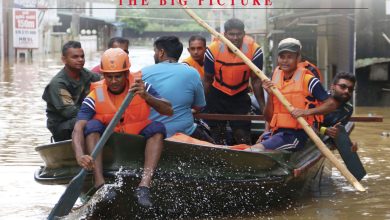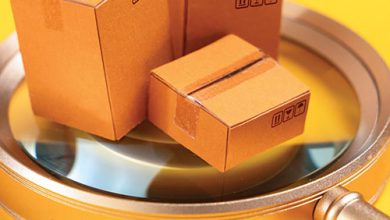DRONE TECHNOLOGY
THE HIGHFLYING EYE IN THE SKY
Ruwandi Perera has high expectations of the evolving power of drone tech

Originally created by the military for spying and offensive purposes, drones have since evolved not only in size (they are smaller) and outlook, but also in their functionality and technological dexterity.
There are drones everywhere these days! They’re delivering packages, recording videos, scanning fields, and even entertaining children and people who love playing with them. Drones may appear to be out of reach of the masses… but not for long.
Their future is full of blue sky thinking when it comes to the countless possibilities.
Amazon launched its first commercial drone delivery in the UK back in December 2016 when a customer in Cambridge received a package 13 minutes after ordering it. Walmart is also delivering goods via drones, which customers can access and monitor through the retailer’s app.
But when it comes to drone deliveries, delivering to customers who can’t be bothered visiting a supermarket or those who want midnight munchies is only the tip of the iceberg. In the remote areas of Rwanda and Ghana, drones have become lifesaving devices that deliver blood and medical supplies to villagers.
They’re also utilised for their scanning capabilities. Once used for wartime spying, this eye in the sky device is no pie in the sky when it comes to nonmilitary uses today.
Drones help farmers and agriculturists, by transforming crop and field management. They are used to collect and analyse data regarding soil condition and plant health. These devices provide farmers with bigger, better and more accurate vision, so that they can take proactive rather than reactive action on issues such as nutrient deficiencies, pest infestations and other diseases.
Farmers are also able to optimise irrigation by identifying which areas need more or less water. This in turn enables water conservation, waste reduction and cost optimisation.
What’s more, drones are helping to preserve corals and marine ecosystems that are out of reach of humans. Their ability to take high-resolution videos and images is revolutionising marine conservation.
Land animals are beneficiaries too – because wildlife officials and rangers are using drones to intensify their fight against poachers. Since thermal cameras and snare identification radar technologies can be installed on drones, there’s hope that wildlife crime will reduce.
Drone technology is also used in search and rescue operations. Since they are more weather resistant than humans, drones are useful in the search for survivors when hurricanes, storms, earthquakes and floods cause devastation.
Even firefighters are able to use drones to gather critical information when putting out flames or rescuing people from burning buildings. More advanced drones are heat resistant and can reach the hottest of spots in a building or forest.
The benefits of drones aren’t only for functionality purposes; they’re also used to have fun!
For instance, while public entertainment may not be among the top 10 benefits of drone technology, it is astounding to see how these flying machines are used to assess the impact of fireworks!
Fireworks are beautiful; there aren’t many people who don’t enjoy gazing at them when they light up the night sky. However, they’re also extremely dangerous to animals, birds, insects and even people.
The explosions disturb birds and animals who are in their slumber, and distress creatures who don’t understand what’s happening – you only need to watch your dog’s reaction to sudden loud noises.
Drone shows – also known as drone art – are the new fireworks. Multiple drones, which are often quadcopters equipped with LEDs, are flown in coordination to create mesmerising displays in the sky. They are noiseless, safe and reusable.
Yes, they’re not the ideal solution since they create light and can crash into flying animals – but they are far better than fireworks. And who knows, in a few years, drones may have evolved to be more sustainable and animal-friendly.
Technology is a disruptor, an enabler and a solutions provider. And drone technology has immense potential, considering what we’re using it for right now.
Does it have its fair share of faults?
Of course – everything does! Yet, there is hope for better drones and technology so the sky is the limit.





